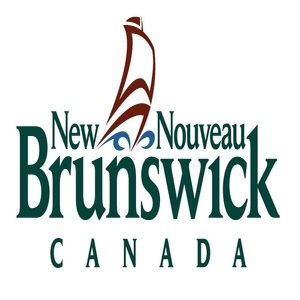drainage
Type of resources
Available actions
Topics
Keywords
Contact for the resource
Provided by
Years
Formats
Representation types
Update frequencies
status
Service types
Scale
-
The "South Tobacco Creek Watershed - 10 cm Contours" dataset is a linear representation of the LiDAR DEM data set to the closest 0.1 meters. For more information, visit: http://open.canada.ca/data/en/dataset/734078a9-9aa1-44a1-9e74-dc9387a9ecfe
-
Le jeu de données « Bassin du ruisseau Tobacco Sud - courbes de niveau de 10 cm » est une représentation linéaire des données LiDAR du jeu de données réglée selon une courbe de niveau de 0,1 mètre. Pour plus d'information, consulter : http://ouvert.canada.ca/data/fr/dataset/734078a9-9aa1-44a1-9e74-dc9387a9ecfe
-
Le jeu de données « Bassin du ruisseau Tobacco Sud - courbes de niveau de 10 cm » est une représentation linéaire des données LiDAR du jeu de données réglée selon une courbe de niveau de 0,1 mètre. Pour plus d'information, consulter : http://ouvert.canada.ca/data/fr/dataset/734078a9-9aa1-44a1-9e74-dc9387a9ecfe
-
Le jeu de données « Projets de données LiDAR d'Agriculture et Agroalimentaire Canada » a été créé à partir de données spatiales existantes. Il contient l'empreinte (aperçu) de toutes les données LiDAR diffusées ouvertement par Agriculture et Agroalimentaire Canada. La méthode LiDAR (détection et télémétrie par ondes lumineuses) consiste en l'acquisition de points de localisation au moyen d'une technologie de télédétection optique. Ce jeu de données fournit des renseignements de base sur l'emplacement, la source et les propriétés des données. Pour plus d'information, consulter : http://ouvert.canada.ca/data/fr/dataset/a760f9e0-7013-4187-9261-2e69b01edd9a
-
The Agriculture and Agri-Food Canada's LiDAR Projects dataset was created from existing spatial data. It contains the footprints (outlines) of all the LiDAR data that is openly distributed by Agriculture and Agri-Food Canada. LiDAR (Light Detection And Ranging) is a method of acquiring survey points using optical remote sensing technology. The dataset indicates basic information about the location, source and properties of the data. For more information, visit: http://open.canada.ca/data/en/dataset/a760f9e0-7013-4187-9261-2e69b01edd9a
-
The "South Tobacco Creek Watershed - 10 cm Contours" dataset is a linear representation of the LiDAR DEM data set to the closest 0.1 meters. For more information, visit: http://open.canada.ca/data/en/dataset/734078a9-9aa1-44a1-9e74-dc9387a9ecfe
-
Les séries de niveaux du Projet des bassins hydrographiques d'Agriculture et Agroalimentaire Canada (AAC) fournissent un certain nombre de jeux de données sur des bassins hydrographiques et en lien avec des bassins hydrographiques pour les provinces des Prairies. Les niveaux sont des petits ou des gros assemblages de zones hydrométriques ou des composantes qui les définissent. Le Projet est organisé selon les stations hydrométriques qui sont fournies par Environnement Canada, les États-Unis et des provinces canadiennes. Des stations additionnelles ont été générées pour régler les problèmes structuraux, comme les confluences de rivière ou les bras de lacs. Collectivement, elles sont désignées comme les stations hydrométriques, ou tout simplement les stations. La superficie des bassins surveillée par chaque station, entre elle-même et ses stations voisines d'amont, est appelée « superficie brute différentielle des bassins hydrographiques ». Les superficies brutes différentielles des bassins hydrographiques sont intégrées dans des regroupements plus grands ou plus petits d'après la taille ou l'intérêt défini de générer divers « niveaux » de séries. Pour plus d'information, consulter : http://ouvert.canada.ca/data/fr/dataset/c20d97e7-60d8-4df8-8611-4d499a796493
-
Les séries de niveaux du Projet des bassins hydrographiques d'Agriculture et Agroalimentaire Canada (AAC) fournissent un certain nombre de jeux de données sur des bassins hydrographiques et en lien avec des bassins hydrographiques pour les provinces des Prairies. Les niveaux sont des petits ou des gros assemblages de zones hydrométriques ou des composantes qui les définissent. Le Projet est organisé selon les stations hydrométriques qui sont fournies par Environnement Canada, les États-Unis et des provinces canadiennes. Des stations additionnelles ont été générées pour régler les problèmes structuraux, comme les confluences de rivière ou les bras de lacs. Collectivement, elles sont désignées comme les stations hydrométriques, ou tout simplement les stations. La superficie des bassins surveillée par chaque station, entre elle-même et ses stations voisines d'amont, est appelée « superficie brute différentielle des bassins hydrographiques ». Les superficies brutes différentielles des bassins hydrographiques sont intégrées dans des regroupements plus grands ou plus petits d'après la taille ou l'intérêt défini de générer divers « niveaux » de séries. Pour plus d'information, consulter : http://ouvert.canada.ca/data/fr/dataset/c20d97e7-60d8-4df8-8611-4d499a796493
-

Polygons of Forest Soils Units, including information on drainage, slope, and aspect.
-

The Waterbodies dataset is comprised of area features: lakes, intermittent waterbodies, islands, and rivers wide enough to be represented as an area feature (e.g. St. Lawrence River, Mackenzie River). In a few exceptional cases, islands had to be represented by "holes" in the polygons in the Waterbodies dataset. Some area features have been subdivided and several types of virtual linear features serve to separate them. Features in this dataset are linked (by an attribute) to their corresponding flow line in the Drainage Network Skeleton. Therefore the Waterbodies dataset may be used in conjunction with the Drainage Network Skeleton for analytical applications. The Islands dataset is comprised of area and linear features: islands within inland waters and the waterbodies and single line rivers within these islands. Oceanic islands are not included as they are part of the coastline component of the Drainage Network Skeleton dataset. The Islands dataset exists to complete the cartographic representation of Canadian hydrology. The Islands dataset is not logically connected with the Drainage Network Skeleton, and can not be used for analytical applications. It should be noted that flow lines of the Drainage Network Skeleton do not take into account of the existence of islands and therefore do not necessarily flow around them. In a few exceptional cases, islands had to be represented by "holes" in the polygons in the Waterbodies dataset. Some islands themselves contain waterbodies and rivers, not significant for network analysis. However, in order to support a complete cartographic representation such waterbodies and rivers have been added to the Islands dataset. The National Scale Frameworks Hydrology data consists of area, linear and point geospatial and attribute data for Canada's hydrology at a national scale. It provides a representation of Canada's surface water features, and data completeness reflects the content of the source, the original Vector Map level 0 (VMAP0) revision 4 hydrographic layers, except where revision editing has been performed. Key value-added characteristics include river flow direction, connectivity and the tagging of geographical name keys to selected rivers, lakes and islands included in the Concise Gazetteer of Canada. The Atlas Frameworks are a set of integrated base map layers which form part of a larger National Scale Frameworks data collection. These data have been compiled at a scale of 1:1 000 000 with the primary goal being to indicate correct relative positioning with other framework layers rather than absolute positional accuracy. Distributed from [GeoYukon](https://yukon.ca/geoyukon) by the [Government of Yukon](https://yukon.ca/maps) . Discover more digital map data and interactive maps from Yukon's digital map data collection. For more information: [geomatics.help@yukon.ca](mailto:geomatics.help@yukon.ca)
 Arctic SDI catalogue
Arctic SDI catalogue